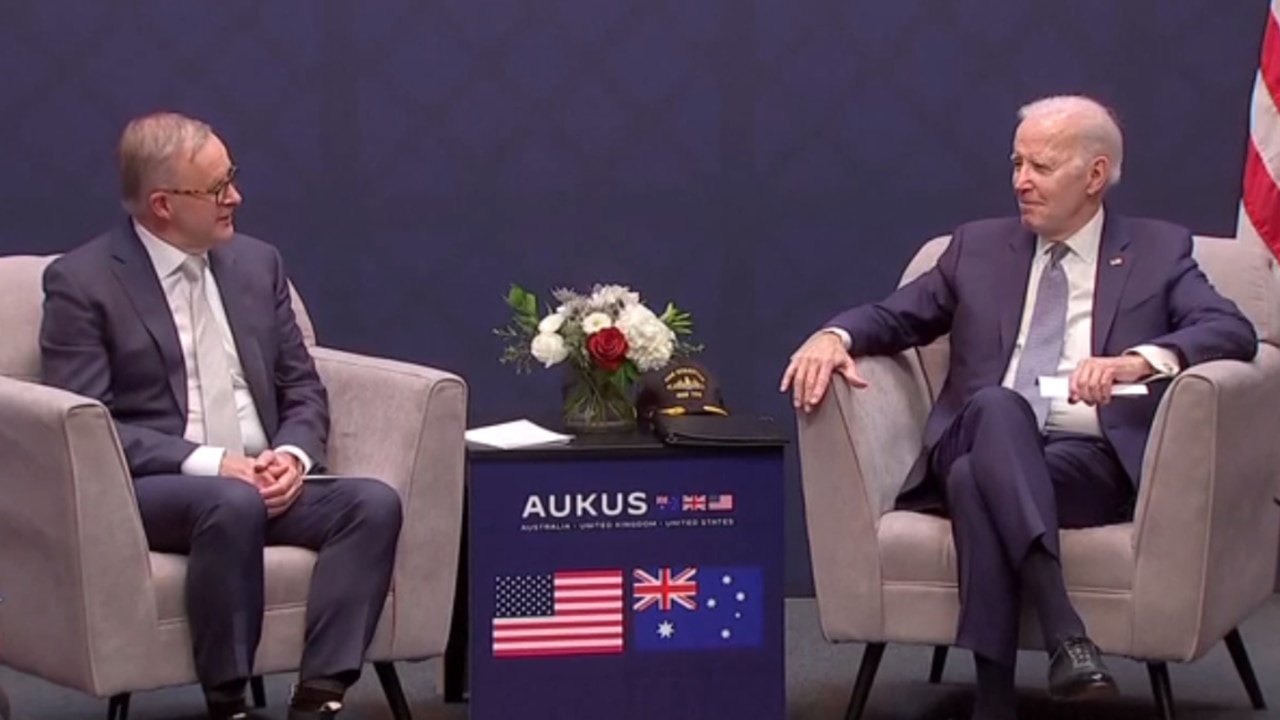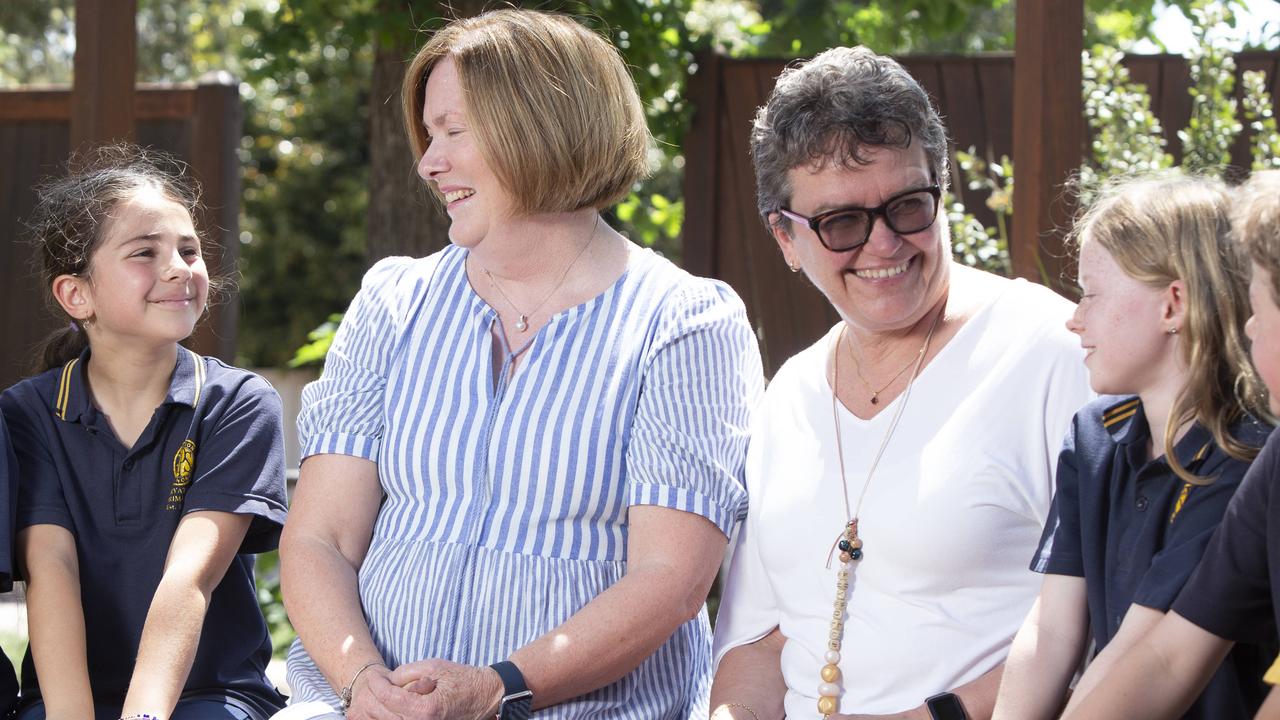Risk and reward as Marles calls for new military mindset
AI and hypersonic missile development cannot wait, Australia’s defence minister says, as he outlines a new approach to the country’s military development.

SA News
Don't miss out on the headlines from SA News. Followed categories will be added to My News.
Australia must turbocharge the development of artificial intelligence, hypersonic missiles and other advanced defence capabilities to help counter potential adversaries’ forces, says Defence Minister Richard Marles.
Delivering a keynote speech in Adelaide, Mr Marles said applying technological know-how to be at the “cutting edge of technology” was the second pillar of the AUKUS security pact, beyond the $368bn nuclear-powered submarine construction.
Mr Marles said delivering this ambitious vision “in the shortest possible time”, as urged by the Defence Strategic Review (DSR) delivered in April, would require a new mindset.

“The Defence Strategic Review argues that this now demands that as a nation we need to act with a controlled sense of urgency. We have no time to waste,” Mr Marles told an AmCham lunch at SkyCity Adelaide on Wednesday.
“Defence will need to prioritise and accelerate innovation. If we are to develop these advanced capabilities, we need to adopt an innovation mindset – one where we are not afraid to fail fast, learn, and adapt.”
Mr Marles highlighted the government’s response to the DSR, particularly the creation of an Advanced Strategic Capabilities Accelerator designed to “turbocharge Australia’s contribution to pillar two of AUKUS”.
This also involved building a “truly trilateral industrial base” across the three AUKUS partners, including the US and United Kingdom, allowing a more seamless transfer of skills, workers and intellectual property.
“Defence no longer has the luxury of taking the time to get a capability perfect. We need to adopt a minimum viable capability model to have new capabilities put into service quicker,” he said.
“We must also change our relationship to risk and celebrate the learning that comes from failure, and we must understand that while industry always wants to hear ‘yes’ when it comes to a government tender, a quick ‘no’ is the next best option.
“These are the ingredients to making defence procurement faster and more nimble. And while governments have talked the talk before, we know that unless we walk the walk now, we will not meet the urgency of this moment.”
Mr Marles said technology and information transfer between Australia and the US needed to be seamless if the ambition of AUKUS was to be realised.
“This is a big task – the barriers in both systems are vast and complex. There is no silver bullet,” he said.
But he said there was encouraging momentum across both countries, including in his conversations with his US counterpart, Defence Secretary Lloyd Austin.

Frigates’ future clouded by review
The future of the $45bn Adelaide project to build nine Hunter class frigates has been needlessly clouded by yet another defence review into surface ships, says former defence minister Christopher Pyne.
Speaking at an AmCham lunch in Adelaide, Mr Pyne said the BAE Systems Australia project should have been incorporated into the Defence Strategic Review (DSR), released on April 24.
The former Liberal minister said Defence Department decisions already had been paused for a year, awaiting the DSR.
“Now we wait probably at least six months for decisions to be made around the surface vessels and I think that is a disappointment,” he said.
But Mr Pyne said there was plenty of looming defence industry work, even if the Osborne Naval Shipyard-based project was wound back from nine to six ships.
“Six anti-submarine warfare frigates – I’m sure my friends at BAE will be saying this is not true. But the reality is that is a big job which will take years to do and they will be happy to have six anti submarine warfare frigates to build and also be happy to bid for all of the other things that will be on the agenda,” he said
An auditor-general’s report published on May 10 revealed Defence’s internal estimate of the frigate program’s total cost was “significantly higher” than the budgeted $45bn. It would be the second major cost blowout to affect BAE Systems’ project, which started with an initial price tag of $30bn.
This intensified speculation that the number of ships planned for construction in Adelaide would be dramatically slashed because of the naval surface fleet review.
Commenting after the DSR’s release on April 24, a BAE Systems spokeswoman said the company remained “committed to supporting the Australian government” in a range of “critical sovereign capabilities” and highlighted the build of the first schedule protection block – which will be used in the first ship – starting in mid-May.
“We remain committed to building nine anti-submarine warfare frigates for the Royal Australian Navy,” the spokeswoman said at the time.
More Coverage
Originally published as Risk and reward as Marles calls for new military mindset





